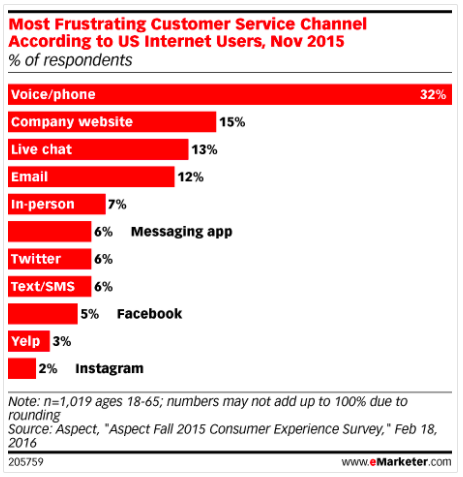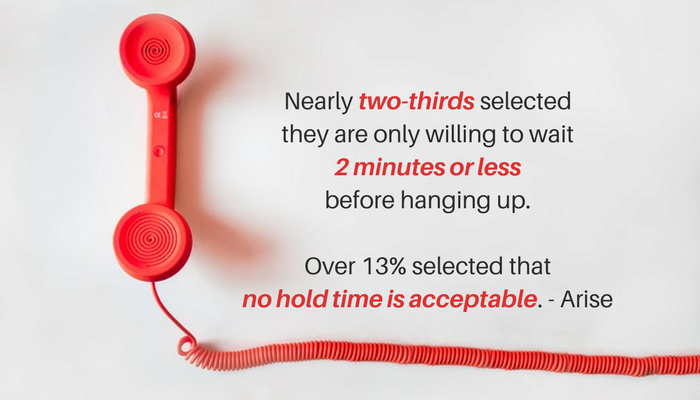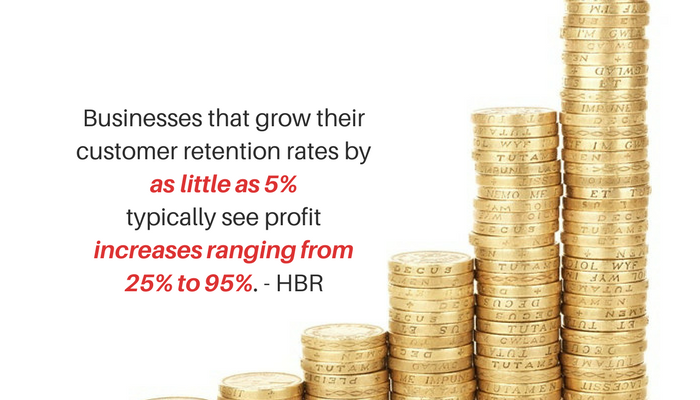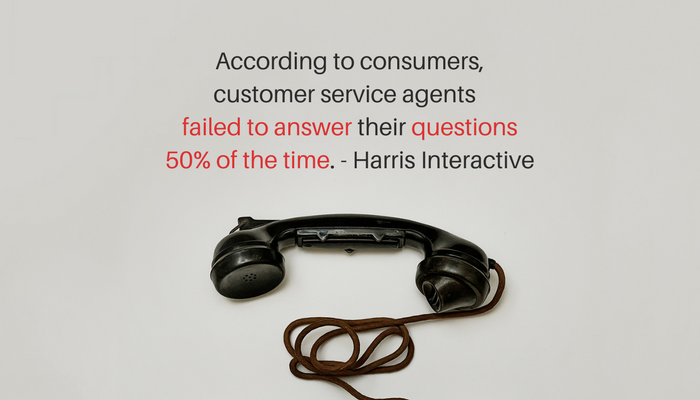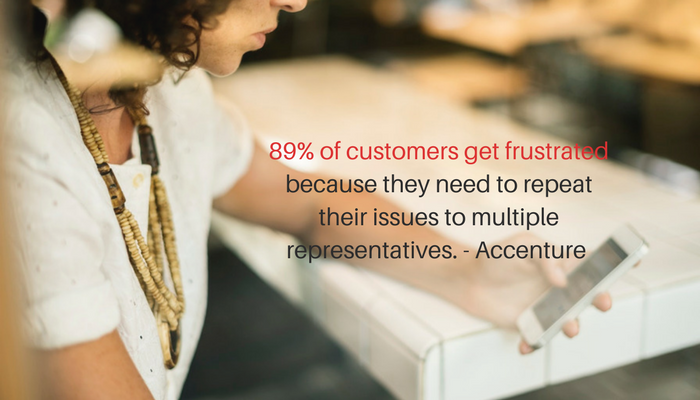People still use the phone
Despite customer interaction channels like Twitter and live chat, the emergence of chatbots and evolving AI technology, many consumers still use the phone to communicate with companies.
Customers most certainly do use these digital channels for assistance. They will consult these channels and other resources that are available 24/7, like knowledge bases and forums, but they do so usually for simpler issues. When they use the phone to contact customer service, they are usually doing so because they want to talk to a real person about more complex issues.
The problem is it’s still a channel that struggles to deliver a positive customer experience.
Success is measured in seconds
There are a number of metrics that affect the high negative opinion customers have of calling call centers for assistance. Call center managers understand and track these metrics, but knowing the metrics important for their call center to succeed is often much easier than tracking them. One of these many KPIs (key performance indicators) for a call center is Average Time in Queue.
This KPI is a measure of the time a customer spends waiting in a call queue for a service or support representative to pick up their call. So in a nutshell, it’s all about how long your customers are waiting to talk to someone on your team and your call center’s success in this area is measured in seconds rather than minutes.
In 2017, Arise conducted a Google Consumer Survey of over 1,500 U.S. Consumers regarding the wait time they considered acceptable before hanging up the phone. From a selection of five options, the results tallied as such:
Why turn back the clock
Customers don’t like to wait on the line to talk to an agent no matter how entertaining the call waiting music. As the seconds on the clock tick away, so does your customer’s patience and confidence in your company. Reducing the time a customer waits on hold makes for not only happier customers but more loyal ones as well. And every second you are able to save your customers being on the phone creates a ripple effect that travels all the way down to your bottom line.
Customers are inclined to repeat their business with your company when their experience with your company is a positive one. And loyal customers are better for business than new ones. Loyal customers will stay with a company longer, tend to buy more and are inclined to recommend the company to others.
How to turn back the clock
Stealing back seconds from the clock starts with your call center team. Getting the opportunity to speak to a human being is, after all, the reason your customers are using the phone to contact your company. Here are a few ways to improve your Average Time in Queue statistics.
Training
You’ve already made the significant investment in hiring real people with the right set of hard and soft skills for helping your customers. These new hires will be representing your company to your valuable customers, so it is worth investing in training them well.
Start training on day zero. Start their training as soon as they are hired. Provide new hires access to a database of product and/or service knowledge, procedures, and call simulations to be reviewed before they start. You’ll have agents that will be more confident and capable of hitting the ground running.
Let them learn from the best. Choose your best call center agents to conduct training sessions and provide coaching. Give your new agents someone that can share their mistakes and successes, real-life call scenarios, and advice.
Never stop training. Be it a lunch and learn about new call center practices or a 15-minute session on a recent successful call, training should always be ongoing. No matter how experienced the agent, there is always something new to learn.
Tools
Besides providing good and consistent training, giving them the right technology will allow your agents to better serve your customers. Inbound and outbound tools can better support your agents and serve your customers.
Customer information, on-demand. Not just a useful tool for sales teams, a CRM (customer relationship management) platform is a long-term investment in the productivity and efficiency of your call center. The customer data stored on a CRM can give call center agents insights into the customer with whom they are interacting. Access to a centralized customer database helps improve call times. With a history of the customer’s purchases, services, issues, and their outcomes at their fingertips, agents can understand and even anticipate a customers’ needs.
Bridge the communication gap. CTI (computer telephony integration) software allows you to connect your call center’s computer interactions with your phone system and other communication channels like email, live chat, text messaging and even fax. Agents make and take calls from their desktops or laptops just by clicking on a number or a link. An added benefit is the software integrates with a CRM. This connection can retrieve a customer history so your agents know who is on the other side of the line and what their past interactions were with your company. In one click, agents can reduce their response time while being prepared for the interaction and greeting your customer by name.
Deliver one-click convenience. Sometimes your customer requires more than one interaction with your support agents. Finding a date and time that works for your customer can take more of your agent’s and customer’s time than expected. An appointment automation tool can simplify the booking process by giving your agents a single tool to manage appointments and enable multiple systems, like a CRM and calendars, to sync for full transparency across the entire call center team.
By providing a self-scheduling link in a follow-up email regarding a customer’s issue or case, your customer can self-schedule from an available set of time slots with the agent who knows their situation. This enables your agents to shorten their case close rates. A full service appointment automation tool will also provide real-time reporting and analytics. It allows you to build dashboards with the statistics that matter to your businesses. Your agents and managers can get real-time updates on customer experiences, and monitor important data such as appointment volume goals, staff utilization goals, and no-shows goals.
A puzzle worth solving
Effectively managing the Average Time in Queue in your call center certainly cannot be done with any one method or tool. The tools and processes you put in place are only as good as the people you have put in place as well. However as long as you support your investment in your people and provide them with a good set of call center technologies, you can deliver expect to deliver an excellent customer service experience and happiness more consistently.
If you would like to consider appointment scheduling for your call center, SUMO Scheduler includes all the features discussed above. You can even make your own custom reports on any table or field in the database and have a report or collection of reports emailed to you every Monday AM before your management meeting. And as a Salesforce® native application, SUMO can extend the power of your Salesforce CRM and Service Cloud®.
SUMO extends the Service Cloud® with powerful scheduling features like:
- a host of powerful auto-assignment modes.
- Sending appointment invites from Salesforce to contacts from cases.
- Inviting contacts to schedule with you or a co-worker.
Not to mention, the ease of data management as everything is in Salesforce with no need to manage two sets of customer data. Let one of our scheduling experts show you how we can help your agents be more productive, deliver better service faster, and improve your organization’s C-SAT.


